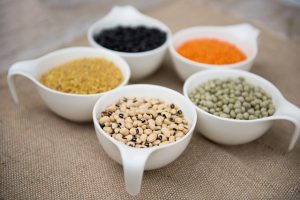Pulses are nutritious foods packed with vitamins, minerals, and fiber. They support digestion, lower cholesterol, control blood sugar, and provide high-quality protein for vegetarians and vegans. Rich in antioxidants and bioactive compounds, pulses promote heart health and aid weight management due to their high fiber content. Incorporate 3-4 weekly servings (about 1 cup of cooked beans, lentils, chickpeas, or peas) into dishes like soups, stews, salads, curries, or smoothies for diverse flavors and significant health benefits.
Pulses, including lentils, beans, and chickpeas, are nutritional powerhouses packed with fiber, protein, vitamins, and minerals. This article explores the profound health benefits of incorporating pulses into your weekly diet, from improving digestion to managing blood sugar levels and reducing cholesterol. We’ll guide you through the nutrient-rich profile of these versatile foods and provide practical tips on how to seamlessly integrate them into your meals. Discover the impact of varied pulse intake on overall well-being and unlock a healthier, more sustainable lifestyle.
- The Nutrient Profile of Pulses: Unlocking Health Benefits
- Incorporating Pulses into Your Weekly Diet
- Varied Pulse Intake and Its Impact on Well-being
The Nutrient Profile of Pulses: Unlocking Health Benefits

Pulses are a nutritional powerhouse packed with essential vitamins, minerals, and dietary fiber. Their unique combination offers a myriad of health benefits, including improved digestion, lower cholesterol levels, and better blood sugar control. The high protein content in pulses makes them an excellent alternative to animal-based proteins, catering especially to vegetarians and vegans.
Beyond their nutritional value, pulses are also rich in antioxidants, which help combat cellular damage and reduce the risk of chronic diseases. They contain bioactive compounds that may contribute to heart health by promoting healthy blood pressure levels and reducing inflammation. Moreover, regular inclusion of pulses in your diet can support weight management efforts due to their high fiber content, which promotes feelings of fullness and reduces overall calorie intake.
Incorporating Pulses into Your Weekly Diet

Incorporating pulses into your weekly diet is a simple yet powerful way to boost your overall health. Aim for 3-4 servings per week—the equivalent of about 1 cup of cooked beans, lentils, or chickpeas. You can easily add them to soups, stews, salads, curries, and even smoothies. Experiment with different types of pulses to keep your meals interesting; each variety offers unique flavors, textures, and nutritional profiles. For example, black beans are rich in iron and folate, while pumpkin seeds provide a wealth of zinc and healthy fats. Incorporating these superfoods into your routine is an accessible step towards improving your diet and reaping the health benefits they offer.
Varied Pulse Intake and Its Impact on Well-being

Incorporating a varied range of pulses into your weekly diet can have significant positive impacts on overall well-being. Different types of pulses, such as lentils, chickpeas, beans, and peas, offer unique nutritional profiles. Each pulse is rich in essential vitamins, minerals, and dietary fiber, contributing to improved digestion, better blood sugar regulation, and lower cholesterol levels.
A balanced intake of pulses can also support heart health by reducing the risk of cardiovascular diseases and promoting a healthier weight. The diverse textures and flavors they bring to meals encourage culinary creativity, making it easier to maintain a nutritious diet over time. By consistently incorporating pulses into your weekly meal plans, you can enjoy both the health benefits and culinary delights they offer.
